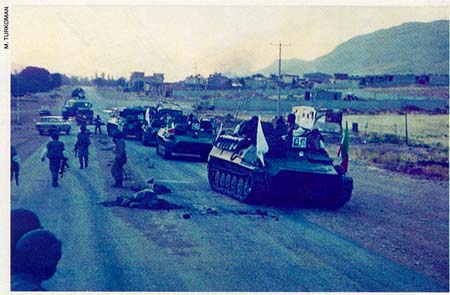On Monday, July 25, 1988, the National Liberation Army of Iran launched its largest military offensive, Operation Eternal Light. The NLA took control of Islamabad and Kerend and advanced to the outskirts of Kermanshah, the provincial capital. In this unprecedented thrust 150 kilometers inside Iran, most enemy bases, their armaments, extensive equipment and facilities were destroyed. Nearly 55,000 of Khomeini's repressive Guards, including a large number of the Guards Corps' members and commanders, were killed or wounded in the greatest battle in the history of the Iranian Resistance. The assault and its remarkable achievements sounded the Khomeini regime's death toll.
To supplement and complete the series of military communiques issued
during and after the operation, the General Command of the National Liberation
Army presents its final report on Operation Eternal Light. This condensed
report is the product of a careful, point-by-point examination of the NLA
combatants' reports as well as independent appraisals of the operation by
each brigade over the past month. 
At 3:30 pm, on Monday, July 25, Maryam Rajavi, Deputy Commander in Chief of the National Liberation Army, issued the order to open fire and advance. A total of 10 NLA divisions -35 combat and support brigades, including mechanized-infantry and armored brigades, artillery and engineering battalions as well as air defense units - launched the offensive.
NLA Chief of Staff Mahmoud Atai'i, with Mehdi Abrishamchi as his deputy, Mehdi Bara'i, Ebrahim Zakeri, Mehdi Eftekhari and Mahmoud Mahdavi commanded the NLA forces on five axes.